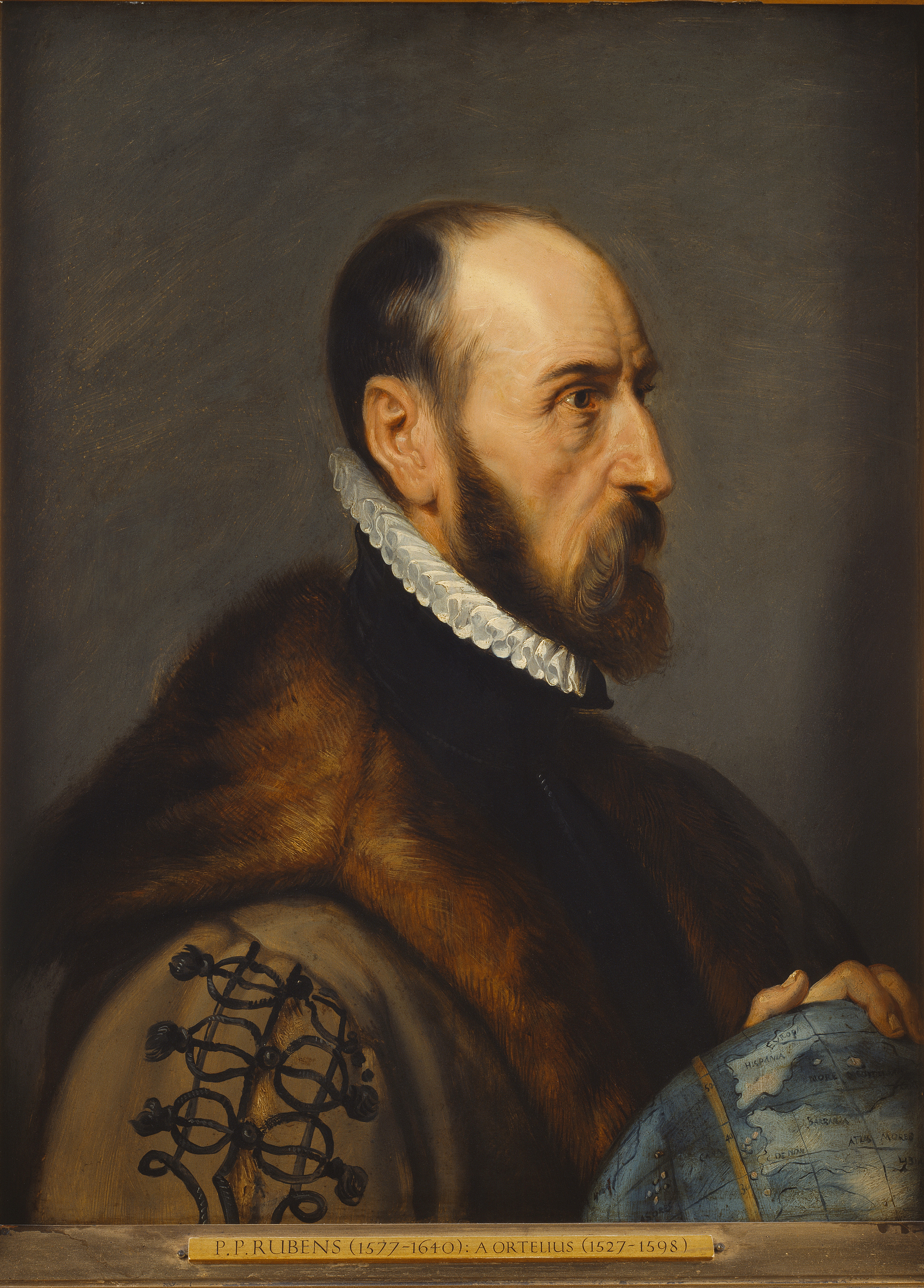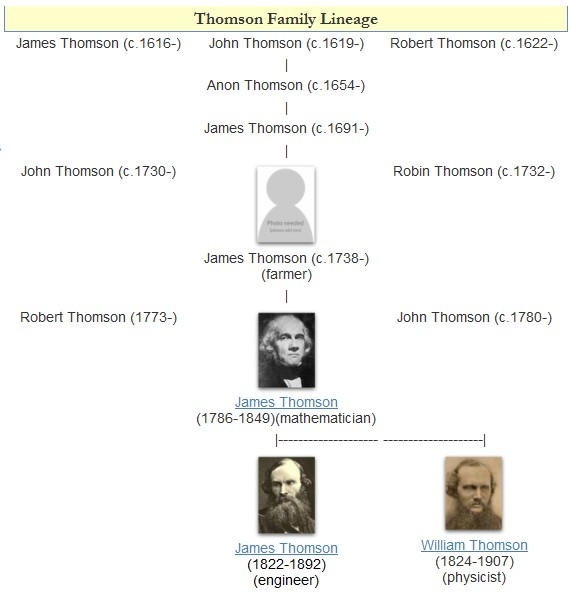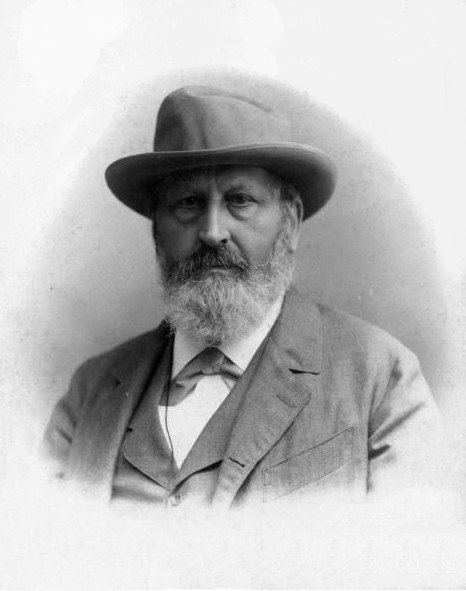|
Continental Drift
Continental drift is a highly supported scientific theory, originating in the early 20th century, that Earth's continents move or drift relative to each other over geologic time. The theory of continental drift has since been validated and incorporated into the science of plate tectonics, which studies the movement of the continents as they ride on plates of the Earth's lithosphere. The speculation that continents might have "drifted" was first put forward by Abraham Ortelius in 1596. A pioneer of the modern view of mobilism was the Austrian geologist Otto Ampferer. The concept was independently and more fully developed by Alfred Wegener in his 1915 publication, "The Origin of Continents and Oceans". However, at that time his hypothesis was rejected by many for lack of any motive mechanism. In 1931, the English geologist Arthur Holmes proposed mantle convection for that mechanism. History Early history Abraham Ortelius , Theodor Christoph Lilienthal (1756), Alexan ... [...More Info...] [...Related Items...] OR: [Wikipedia] [Google] [Baidu] |
Scientific Theory
A scientific theory is an explanation of an aspect of the universe, natural world that can be or that has been reproducibility, repeatedly tested and has corroborating evidence in accordance with the scientific method, using accepted protocol (science), protocols of observation, measurement, and evaluation of results. Where possible, theories are tested under controlled conditions in an experiment. In circumstances not amenable to experimental testing, theories are evaluated through principles of abductive reasoning. Established scientific theories have withstood rigorous scrutiny and embody scientific knowledge. A scientific theory differs from a scientific fact: a fact is an observation and a theory organizes and explains multiple observations. Furthermore, a theory is expected to make predictions which could be confirmed or refuted with addition observations. Stephen Jay Gould wrote that "...facts and theories are different things, not rungs in a hierarchy of increasing certai ... [...More Info...] [...Related Items...] OR: [Wikipedia] [Google] [Baidu] |
James Dwight Dana
James Dwight Dana Royal Society of London, FRS FRSE (February 12, 1813 – April 14, 1895) was an American geologist, mineralogist, volcanologist, and zoologist. He made pioneering studies of mountain-building, volcano, volcanic activity, and the origin and structure of continents and oceans around the world. His zoological author abbreviation is Dana. Early life and career Dana was born February 12, 1813, in Utica, New York. His father was merchant James Dana (1780–1860) and his mother was Harriet Dwight (1792–1870). Through his mother he was related to the Dwight New England family of missionaries and educators including uncle Harrison Gray Otis Dwight and first cousin Henry Otis Dwight. He showed an early interest in science, which had been fostered by Fay Edgerton, a teacher in the Utica high school, and in 1830 he entered Yale College in order to study under Benjamin Silliman the elder. Graduating in 1833, for the next two years he was teacher of mathematics to midshi ... [...More Info...] [...Related Items...] OR: [Wikipedia] [Google] [Baidu] |
Alfred Wegener 1910
Alfred may refer to: Arts and entertainment *''Alfred J. Kwak'', Dutch-German-Japanese anime television series * ''Alfred'' (Arne opera), a 1740 masque by Thomas Arne * ''Alfred'' (Dvořák), an 1870 opera by Antonín Dvořák *"Alfred (Interlude)" and "Alfred (Outro)", songs by Eminem from the 2020 album '' Music to Be Murdered By'' Business and organisations * Alfred, a radio station in Shaftesbury, England *Alfred Music, an American music publisher *Alfred University, New York, U.S. * The Alfred Hospital, a hospital in Melbourne, Australia People * Alfred (name) includes a list of people and fictional characters called Alfred * Alfred the Great (848/49 – 899), or Alfred I, a king of the West Saxons and of the Anglo-Saxons Places Antarctica * Mount Alfred (Antarctica) Australia * Alfredtown, New South Wales * County of Alfred, South Australia Canada * Alfred and Plantagenet, Ontario ** Alfred, Ontario, a community in Alfred and Plantagenet * Alfred Island, Nunavut * ... [...More Info...] [...Related Items...] OR: [Wikipedia] [Google] [Baidu] |
Lord Kelvin
William Thomson, 1st Baron Kelvin (26 June 182417 December 1907), was a British mathematician, Mathematical physics, mathematical physicist and engineer. Born in Belfast, he was the Professor of Natural Philosophy (Glasgow), professor of Natural Philosophy at the University of Glasgow for 53 years, where he undertook significant research on the mathematical analysis of electricity, was instrumental in the formulation of the first and second laws of thermodynamics, and contributed significantly to unifying physics, which was then in its infancy of development as an emerging academic discipline. He received the Royal Society's Copley Medal in 1883 and served as its President of the Royal Society, president from 1890 to 1895. In 1892, he became the first scientist to be elevated to the House of Lords. Absolute temperatures are stated in units of kelvin in Lord Kelvin's honour. While the existence of a coldest possible temperature, absolute zero, was known before his work, Kelvin d ... [...More Info...] [...Related Items...] OR: [Wikipedia] [Google] [Baidu] |
John Perry (engineer)
John Perry (14 February 1850 – 4 August 1920) was a pioneering engineer and mathematician from Ireland. Life He was born on 14 February 1850 at Garvagh, County Londonderry, the second son of Samuel Perry and a Scottish-born wife. John's brother James was the County Surveyor in Galway West and co-founded the Galway Electric Light Company. One of James Perry’s daughters, Alice, was one of the first women in the world with an engineering degree. Perry worked as Lord Kelvin's assistant at the University of Glasgow, and later became professor of mechanical engineering at Finsbury Technical College. He was a colleague of William Edward Ayrton and John Milne at the Imperial College of Engineering in Tokyo, 1875–79, and was also a Fellow of the Royal Society. He was professor of mathematics at Imperial College in London from 1896 to 1913. In 1900 he was elected president of the Institution of Electrical Engineers, and from 1906 to 1908 served as president of the Physical Soci ... [...More Info...] [...Related Items...] OR: [Wikipedia] [Google] [Baidu] |
Geosyncline
A geosyncline (originally called a geosynclinal) is an obsolete geology, geological concept to explain orogeny, orogens, which was developed in the late 19th and early 20th centuries, before the theory of plate tectonics was envisaged.#Sengor1982, Şengör (1982), p. 11 A geosyncline was described as a giant downward fold in the crust (geology), Earth's crust, with associated upward folds called geanticlines (or geanticlinals), that preceded the climax phase of orogeny, orogenic deformation. History The geosyncline concept was first conceived by the American geologists James Hall (paleontologist), James Hall and James Dwight Dana in the mid-19th century, during the classic studies of the Appalachian Mountains. Émile Haug further developed the geosyncline concept, and introduced it to Europe in 1900.#Sengor1982, Şengör (1982), p. 26 Eduard Suess, a leading geologist of his time, disapproved the concept of geosyncline, and in 1909 he argued against its use due to its association w ... [...More Info...] [...Related Items...] OR: [Wikipedia] [Google] [Baidu] |
Land Bridge
In biogeography, a land bridge is an isthmus or wider land connection between otherwise separate areas, over which animals and plants are able to cross and colonize new lands. A land bridge can be created by marine regression, in which sea levels fall, exposing shallow, previously submerged sections of continental shelf; or when new land is created by plate tectonics; or occasionally when the sea floor rises due to post-glacial rebound after an ice age. Prominent examples Former land bridges * The Bassian Plain, which linked Australia to Tasmania * The Antarctic Land Bridge, which connected South America, Antarctica, and Australia during the Late Cretaceous and Early Paleogene * The Bering Land Bridge (aka Beringia), which intermittently connected Alaska (Northern America) with Siberia (North Asia) as sea levels rose and fell under the effect of ice ages * GAARlandia, a hypothesized land bridge which potentially connected the Greater Antilles with South America d ... [...More Info...] [...Related Items...] OR: [Wikipedia] [Google] [Baidu] |
Tethys Ocean
The Tethys Ocean ( ; ), also called the Tethys Sea or the Neo-Tethys, was a prehistoric ocean during much of the Mesozoic Era and early-mid Cenozoic Era. It was the predecessor to the modern Indian Ocean, the Mediterranean Sea, and the Eurasian inland marine basins (primarily represented today by the Black Sea and Caspian Sea). During the early Mesozoic, as Pangaea broke up, the Tethys Ocean was defined as the ocean located between the ancient continents of Gondwana and Laurasia. After the opening of the Indian and Atlantic oceans during the Cretaceous Period and the breakup of these continents over the same period, it came to be defined as the ocean bordered by the continents of Africa, Eurasia, India, and Australasia. During the early-mid Cenozoic, the Indian, African, Australian and Arabian plates moved north and collided with the Eurasian plate, which created new borders to the ocean, a land barrier to the flow of currents between the Indian and Mediterranean basins, and t ... [...More Info...] [...Related Items...] OR: [Wikipedia] [Google] [Baidu] |
Gondwana
Gondwana ( ; ) was a large landmass, sometimes referred to as a supercontinent. The remnants of Gondwana make up around two-thirds of today's continental area, including South America, Africa, Antarctica, Australia (continent), Australia, Zealandia, Arabian Peninsula, Arabia, and the Indian subcontinent. Gondwana was formed by the Accretion (geology), accretion of several cratons (large stable blocks of the Earth's crust), beginning with the East African Orogeny, the collision of India and Geography of Madagascar, Madagascar with East Africa, and culminating in with the overlapping Brasiliano orogeny, Brasiliano and Kuunga orogeny, Kuunga orogenies, the collision of South America with Africa, and the addition of Australia and Antarctica, respectively. Eventually, Gondwana became the largest piece of continental crust of the Paleozoic Era, covering an area of some , about one-fifth of the Earth's surface. It fused with Laurasia during the Carboniferous to form Pan ... [...More Info...] [...Related Items...] OR: [Wikipedia] [Google] [Baidu] |
Eduard Suess
Eduard Suess (; 20 August 1831 – 26 April 1914) was an Austrian geologist and an expert on the geography of the Alps. He is responsible for hypothesising two major former geographical features, the supercontinent Gondwana (proposed in 1861) and the Tethys Ocean. Biography Eduard Suess was born on 20 August 1831 in London, England, the oldest son of Adolph Heinrich Suess, a Lutheran Saxon merchant, and mother Eleonore Friederike Zdekauer. Adolph Heinrich Suess was born on 11 March 1797 in Saxony and died on 24 May 1862 in Vienna; Eleonore Friederike Zdekauer was born in Prague, now part of the Czech Republic, which once belonged to the Holy Roman Empire and the Austrian Empire. When Eduard Suess was an infant, his family relocated to Prague, and then to Vienna when he was 14. He became interested in geology at a young age. At the age of 19, while working as an assistant at the Hofmuseum in Vienna, he published his first paper—on the geology of Carlsbad (now Karlovy Vary ... [...More Info...] [...Related Items...] OR: [Wikipedia] [Google] [Baidu] |
Continental Shelf
A continental shelf is a portion of a continent that is submerged under an area of relatively shallow water, known as a shelf sea. Much of these shelves were exposed by drops in sea level during glacial periods. The shelf surrounding an island is known as an "''insular shelf''." The continental margin, between the continental shelf and the abyssal plain, comprises a steep continental slope, surrounded by the flatter continental rise, in which sediment from the continent above cascades down the slope and accumulates as a pile of sediment at the base of the slope. Extending as far as 500 km (310 mi) from the slope, it consists of thick sediments deposited by turbidity currents from the shelf and slope. The continental rise's gradient is intermediate between the gradients of the slope and the shelf. Under the United Nations Convention on the Law of the Sea, the name continental shelf was given a legal definition as the stretch of the seabed adjacent to the shores ... [...More Info...] [...Related Items...] OR: [Wikipedia] [Google] [Baidu] |
Challenger Expedition
The ''Challenger'' expedition of 1872–1876 was a scientific programme that made many discoveries to lay the foundation of oceanography. The expedition was named after the naval vessel that undertook the trip, . The expedition, initiated by William Benjamin Carpenter, was placed under the scientific supervision of Sir Charles Wyville Thomson—of the University of Edinburgh and Merchiston Castle School—assisted by five other scientists, including Sir John Murray (oceanographer), John Murray, a secretary-artist and a photographer. The Royal Society of London obtained the use of ''Challenger'' from the Royal Navy and in 1872 modified the ship for scientific tasks at Sheerness, equipping it with separate laboratories for natural history and chemistry. The expedition, led by Captain George Nares, sailed from Portsmouth, England, on 21 December 1872. Other naval officers included Commander John Maclear. – pages 19 and 20 list the civilian staff and naval officers and crew, along ... [...More Info...] [...Related Items...] OR: [Wikipedia] [Google] [Baidu] |








